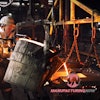
This blog originally appeared on HR Resource Force.
According to a Gallup research poll, only 30 percent of the U.S. workforce is engaged in their work. The vast majority of U.S. workers (70 percent) are not reaching their full potential. A study of 64 organizations revealed highly engaged employees achieve two times the annual income of organizations whose employees are mostly disengaged. Analyzing how and why your employees are motivated will increase your productivity & profits. Employees come from diverse family cultures, assorted education levels, and possess unique motivations.
If you want to entice your employees, incentives will only work when the individual places a high value on the allurement. Inspirations must be important and obtainable, or they will waste your time and money.
Intrinsic Motivation
Intrinsically motivated people want to fulfill basic needs; food, shelter, financial comfort, feelings of pride, joy, increased self-esteem, personal satisfaction. They want to prove to themselves they have self worth and are the person they aspire to be. As Forbes remarks, rewards that are strictly monetary will stifle the creativity of a project and an employee’s unique approach. In fact, HR trends indicate, higher financial rewards lead to lower performance. Studies have shown that paying an employee too much can have adverse effects on their work performance.
Extrinsic Motivation
Extrinsically motivated individuals want to please others so they may receive positive responses, praise, acceptance & recognition. They like a tangible outcome as a result of their performance such as; a certificate, public announcement, a scholarship, grades, & level systems. Telling an extrinsically motivated person they have to do something because you said so is ineffective and a waste of time. You must motivate on a cerebral level, and drive employees towards THEIR desired outcome.
Why Your Routine Workers Are Unmotivated & What To Do:
1. No Incentives:
Factory workers etc., benefit from the carrot and the stick method of reward. Each day and or week a quota is met, a minimum error rate was achieved, a time schedule was abided, provide a flex; hour pass, day pass, lunch pass, personal appointment pass. #Compliance will increase if you implement a level system with 20 flex passes turned back in equals a free pizza dinner, bagel & donut breakfast, 40 flex passes turned back in equals a free baseball game day, 200 flex passes equals two days as a supervisor, a new responsibility assigned…
2. No Stability:
Offer a stable, secure future. Establish employee criteria that guarantees 6 months, one year, and three years employment. Your commitment and belief in them will increase their interconnectivity and motivation for you.
3. Boring Work:
Break the monotony. Create 2-3 skill rotations. Each hour employees with skill A move to skill B, skill B workers move to skill C. Diversity to their day and their skill base will engage your work force and increase your organizations production levels. This extra training and effort will reward you with increased #compliance; attendance, less workers compensation claims, and better attitudes.
4. Not A Happy Place:
Reward productivity results with employee empowerment. Let your workers choose the hat day, music, dinner (under your budget). Provide fun games such as; match a baby picture with the employee, hidden object (where’s Waldo)… Create a game, lounge room so your employees can have fun connecting with each other. HR trends indicate, the more you deepen their alliance to each other, the less likely they will skip out on work or leave.
Why Your Educated Workers Are Unmotivated & What To Do:
5. Stagnant Creativity:
White collar professionals want autonomy, mastery of a skill important to them, and a sense of purpose what they are doing matters to the world. Contrive a program in which your staff creates one creative objective every other month that improves their work mission or connects their work with the outside world. At the end of the month have your employees do a 5 minute presentation on how they accomplished this skill and identify why it matters to the big picture. Use a white board to show off the objectives of the month. Offer your employees with 10 creative submissions a new responsibility that leads them to their next career goal.
6. No Trust:
Inspire through trust. Modern HR management realizes if you treat your employees with respect they will be motivated to conquer more. Strategic HR trends includes employees in senior management meetings, and helps individuals recognize their career potential. Feeling heard, validated, and as a piece to the solution, will convert extrinsic motivation to intrinsic motivation.
7. Lack Of Company Mission
Employees need clear direction. You must convey your organization’s objective as a whole, and communicate how each employee’s job assignment contributes to the business’ aim internally and externally. Establish a public purpose. Give your employees the opportunity to volunteer their skills & efforts towards a public purpose.
8. No Opportunity:
Career advancement opportunity may be the most important motivator. Ongoing skill and education opportunity will validate your staff’s employment status is worthwhile. As an employer and or supervisor, remain informed of vacant positions and their required skills, so you can facilitate your teams’ advancement. Richard Branson eloquently states; Train people well enough so they can leave, treat them well enough so they don’t want to.
About HR Resource Force
Using innovative employee solutions we help companies refocus their existing resources to a strategic automated initiative that reduces the burden of administrative tasks. http://www.hrresourceforce.com/






















